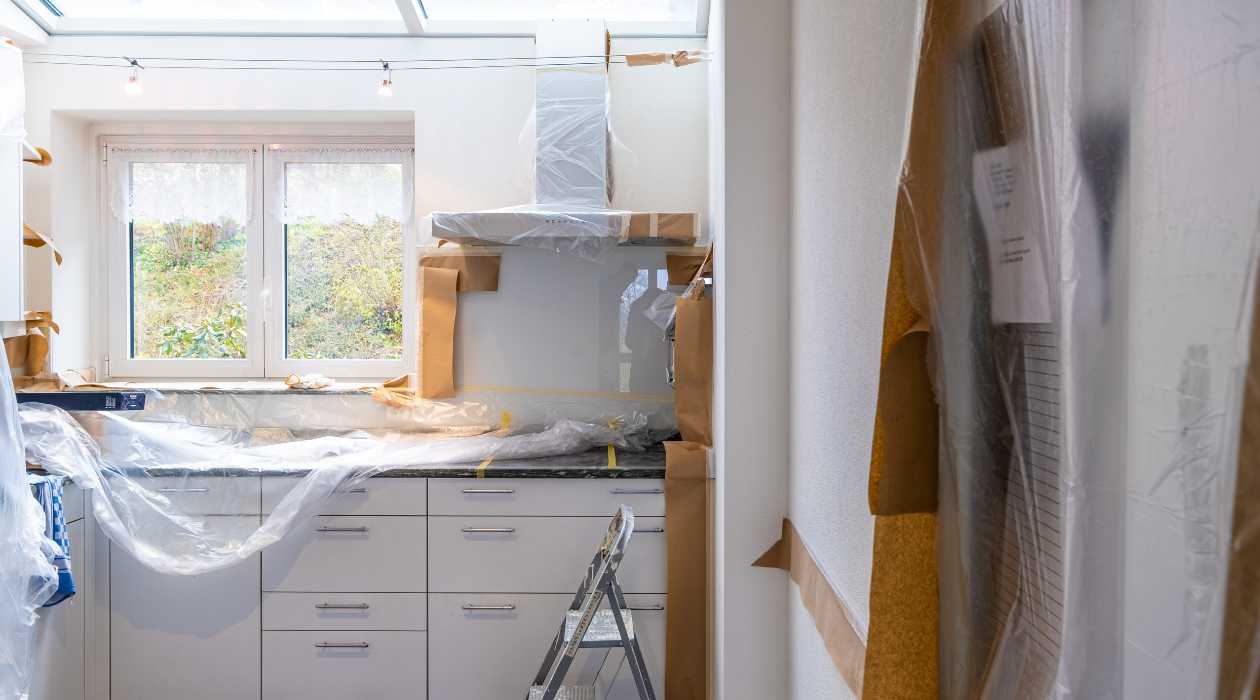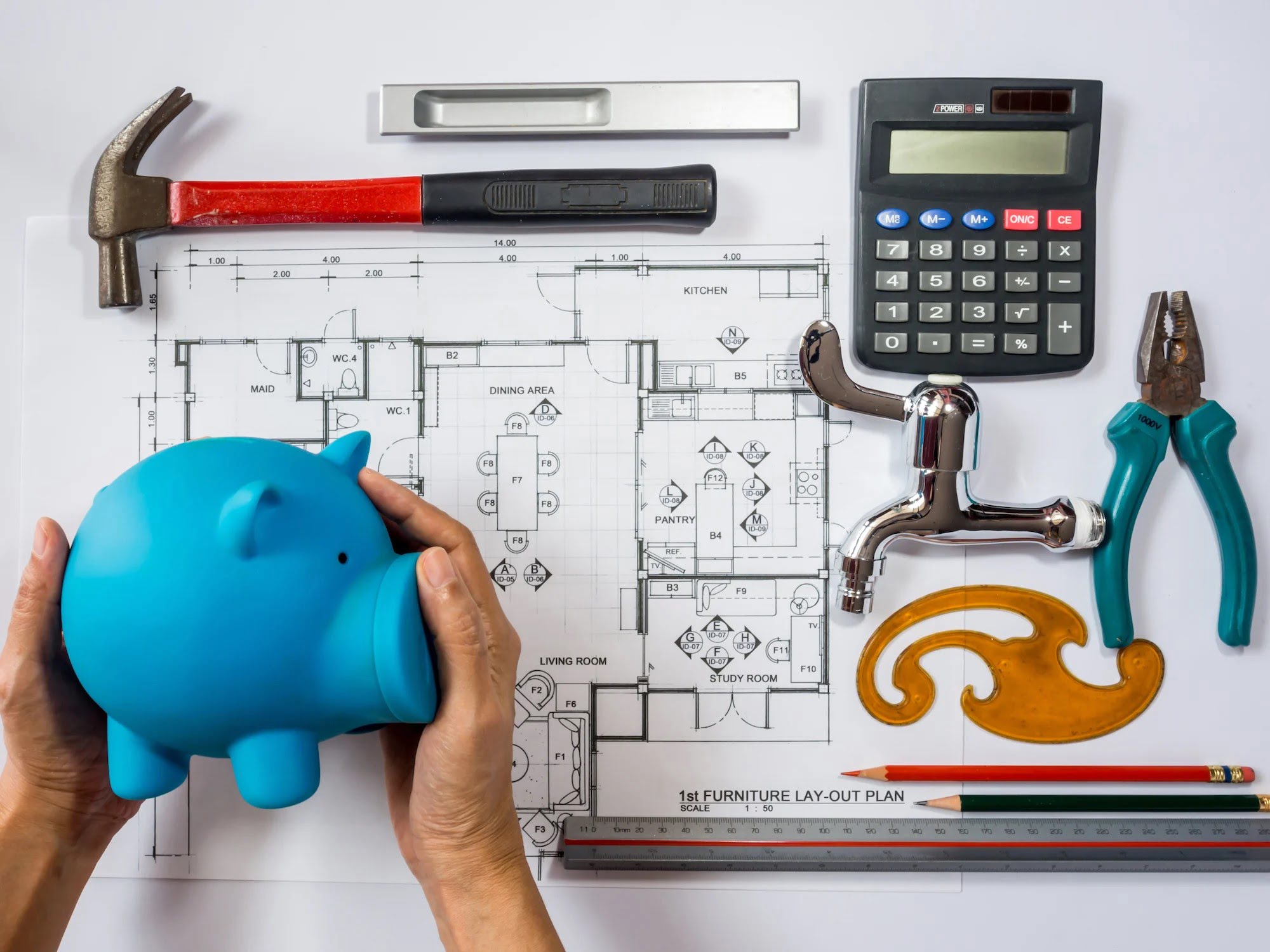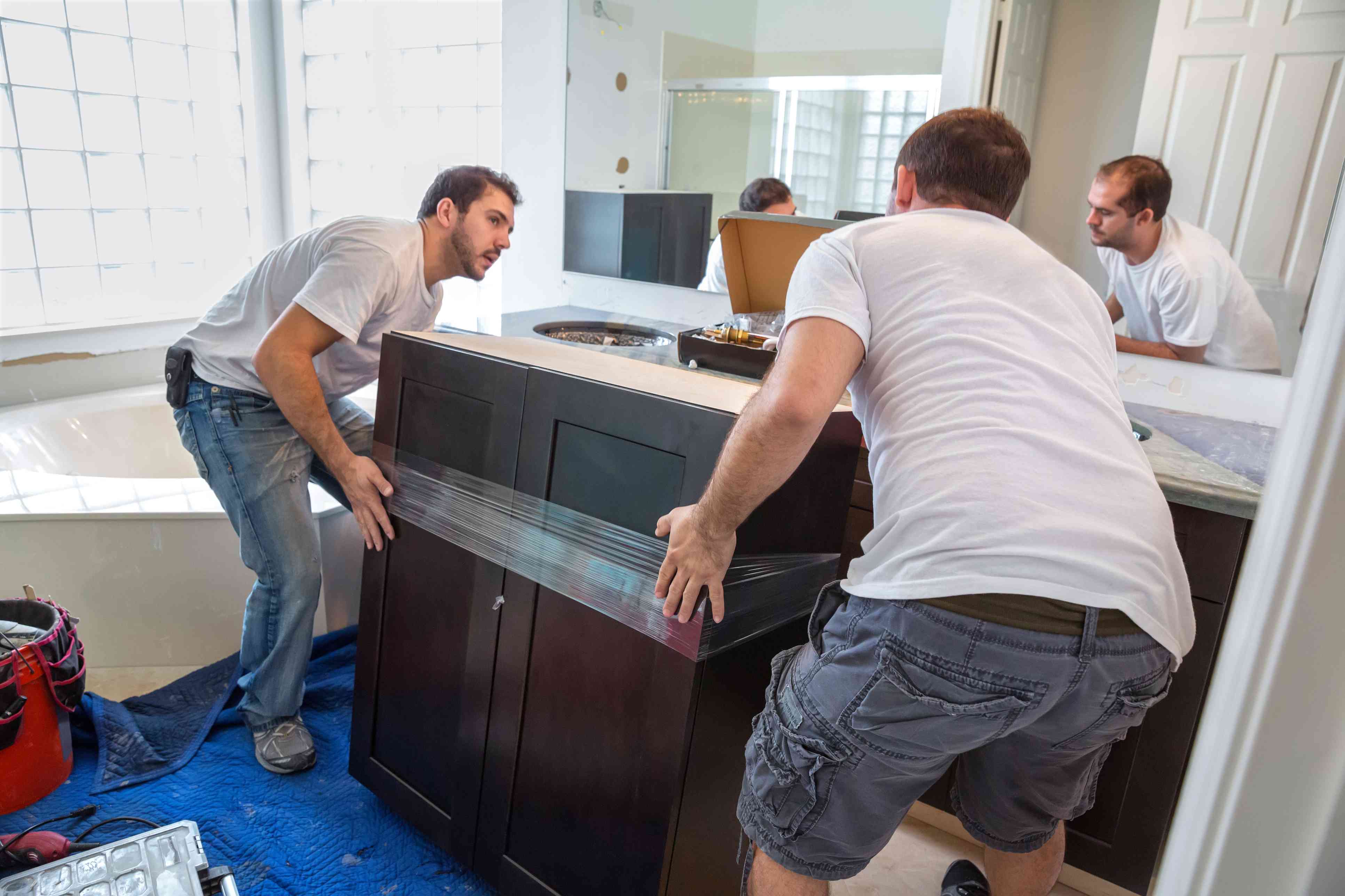Home>Renovation & DIY>Home Renovation Guides>How To Save Money On Home Renovation


Home Renovation Guides
How To Save Money On Home Renovation
Modified: October 20, 2024
Discover expert tips and tricks for saving money on your home renovation with our comprehensive guides. Start your project with confidence and stay within budget.
(Many of the links in this article redirect to a specific reviewed product. Your purchase of these products through affiliate links helps to generate commission for Storables.com, at no extra cost. Learn more)
Introduction
Embarking on a home renovation project is an exciting endeavor that promises to breathe new life into your living space. Whether you're envisioning a sleek, modern kitchen, a cozy and inviting living room, or a luxurious bathroom retreat, the prospect of transforming your home is undeniably enticing. However, the cost of renovation can often be a deterrent, leading many homeowners to put their dreams on hold. Fortunately, there are numerous strategies and approaches that can help you save money on your home renovation without compromising on quality or style.
In this comprehensive guide, we will explore practical and creative ways to make your home renovation more cost-effective. From setting a realistic budget and conducting thorough research to considering the benefits of DIY versus hiring professionals, we will delve into the various aspects of cost-saving renovation tactics. Additionally, we will discuss the importance of reusing and recycling materials, comparison shopping for both materials and labor, and considering alternative options to achieve your desired look within your budget.
By prioritizing renovations, avoiding unnecessary structural changes, and actively seeking out discounts and deals, you can significantly reduce the overall cost of your home renovation project. Whether you're aiming for a minor facelift or a complete overhaul, this guide will equip you with the knowledge and insight needed to navigate the renovation process while keeping your finances in check.
Join us on this journey as we uncover the most effective strategies to save money on your home renovation, allowing you to bring your vision to life without breaking the bank. Let's dive into the world of cost-conscious renovation and discover how to achieve remarkable results within your means.
Key Takeaways:
- Transform your home on a budget by setting a realistic budget, researching materials and labor, and considering DIY vs. professional help. Prioritize renovations and seek discounts to achieve remarkable results within your means.
- Save money on home renovation by reusing materials, comparison shopping, and avoiding unnecessary structural changes. Embrace creativity and resourcefulness to achieve a stunning transformation while staying within your budget.
Set a Budget
One of the fundamental steps in embarking on a home renovation journey is establishing a realistic budget. Setting a clear financial framework from the outset will not only guide your decisions throughout the project but also prevent overspending. Begin by evaluating your current financial situation and determining how much you can comfortably allocate to the renovation without straining your overall finances.
Consider obtaining quotes from multiple contractors or professionals to gauge the average cost of your desired renovation. This will provide you with a realistic understanding of the expenses involved and enable you to set a budget that aligns with your financial capabilities. It’s important to factor in a contingency reserve of around 10-20% of the total budget to accommodate unexpected costs that may arise during the renovation process.
While it’s tempting to aim for the most lavish renovation, it’s crucial to be pragmatic about your budgetary constraints. Prioritize the areas that require immediate attention or those that will have the most significant impact on your living space. By allocating your budget strategically, you can achieve a transformative renovation without exceeding your financial limits.
Furthermore, maintaining a detailed record of all expenses and transactions related to the renovation will provide you with a clear overview of your spending. This level of transparency is invaluable in ensuring that you stay within your budgetary boundaries and can make informed decisions regarding any necessary adjustments along the way.
By setting a well-defined budget and adhering to it throughout the renovation process, you can approach your project with confidence, knowing that you are effectively managing your finances while working towards realizing your vision for your home.
Research and Plan
Thorough research and meticulous planning are essential components of a successful and cost-effective home renovation. Before diving into the project, take the time to explore various design inspirations, material options, and renovation strategies. By immersing yourself in the wealth of resources available, such as home improvement magazines, online platforms, and social media, you can gather valuable insights and ideas that align with your vision.
Creating a detailed plan that outlines the scope of the renovation, including specific design elements, required materials, and a realistic timeline, is crucial. This plan will serve as a roadmap, guiding you through each phase of the renovation and minimizing the likelihood of impulsive, budget-busting decisions.
When researching materials and design concepts, consider the long-term durability and functionality of each element. Opting for high-quality, durable materials may involve a higher initial investment, but it can lead to substantial cost savings in the long run by reducing the need for frequent repairs or replacements.
Additionally, seek out reputable contractors or professionals with a proven track record in delivering quality renovations within budget. Requesting references and thoroughly vetting potential contractors can help you avoid costly mistakes and ensure that the renovation is carried out efficiently and to a high standard.
Collaborating with an experienced architect or designer can also be beneficial, as their expertise can streamline the planning process and help you make informed decisions that align with your budget and aesthetic preferences. By leveraging their knowledge and insights, you can avoid potential pitfalls and optimize the use of your resources.
Ultimately, investing time in thorough research and comprehensive planning will empower you to make informed decisions, avoid unnecessary expenses, and execute a well-organized renovation that stays within your budgetary constraints. By approaching the renovation process with a strategic and well-informed mindset, you can maximize the value of your investment and achieve a stunning transformation that reflects your unique style and preferences.
DIY vs Hiring Professionals
When embarking on a home renovation, one of the key considerations that can significantly impact the overall cost is the decision between tackling the project as a do-it-yourself (DIY) endeavor or enlisting the expertise of professional contractors. While DIY projects can offer cost savings in terms of labor expenses, it’s essential to assess the scope and complexity of the renovation and honestly evaluate your own skills and capabilities.
Simple, straightforward tasks such as painting, minor repairs, or cosmetic upgrades may lend themselves well to a DIY approach, allowing you to save on labor costs and exercise your creativity. However, for more intricate or specialized tasks, such as electrical work, plumbing, or structural modifications, it’s often advisable to seek the assistance of qualified professionals to ensure safety, compliance with building codes, and a high-quality outcome.
Before opting for a DIY approach, carefully weigh the potential savings against the risks of errors or rework that could lead to additional expenses. Consider whether you have the necessary tools, expertise, and time to complete the project to a satisfactory standard, taking into account the learning curve and potential setbacks that may arise along the way.
On the other hand, hiring experienced professionals can provide peace of mind and assurance of a well-executed renovation, particularly for complex or large-scale projects. While professional services may entail higher upfront costs, the expertise, efficiency, and quality of workmanship they offer can ultimately result in long-term savings by minimizing the need for corrections or replacements.
Another aspect to consider is the potential impact on the resale value of your home. Renovations carried out by licensed professionals often carry more weight in the real estate market and can contribute to a higher appraisal value, offsetting the initial investment in professional services.
Ultimately, the decision to pursue a DIY approach or engage professionals should be based on a thorough assessment of the project’s requirements, your own capabilities, and the potential long-term implications. By striking a balance between cost considerations and the desired quality of the renovation, you can make an informed choice that aligns with your budget and vision for your home.
Reuse and Recycle Materials
Embracing a sustainable and cost-effective approach to home renovation involves exploring opportunities to reuse and recycle materials, thereby reducing both expenses and environmental impact. By incorporating salvaged or repurposed materials into your renovation project, you can infuse your home with unique character while minimizing the need for brand-new, costly resources.
One of the most accessible avenues for sourcing reusable materials is salvage yards, where a diverse array of items such as doors, fixtures, flooring, and architectural elements can be found at a fraction of the cost of new equivalents. These salvaged materials not only contribute to a distinctive aesthetic but also align with eco-friendly principles, making them an appealing choice for budget-conscious renovators with a focus on sustainability.
Additionally, consider repurposing existing elements within your home rather than discarding them. Upcycling furniture, cabinetry, or decorative features can breathe new life into these items, saving on the expense of purchasing replacements while adding a touch of individuality to your space.
Furthermore, explore the potential for repurposing construction materials from your own renovation or other projects. Leftover lumber, tiles, or stone can often be creatively utilized in subsequent renovations or repurposed for smaller-scale projects, effectively maximizing their value and minimizing waste.
Engaging in a mindset of reusing and recycling materials not only contributes to a more sustainable renovation but also presents an opportunity for cost savings that can be redirected towards other aspects of the project. By embracing creativity and resourcefulness, you can transform your home while minimizing the financial and environmental impact of your renovation endeavors.
Read more: How To Save On Home Renovations
Comparison Shop for Materials and Labor
Efficiently managing the costs of a home renovation involves diligent comparison shopping for both materials and labor. By exploring multiple sources and obtaining competitive quotes, you can make informed decisions that align with your budget while ensuring the quality and integrity of the renovation.
When sourcing materials, take the time to research and compare prices from various suppliers, including local hardware stores, specialty retailers, and online vendors. Keep an eye out for sales, promotions, and clearance offers, as these can present opportunities to acquire high-quality materials at reduced prices. Additionally, consider purchasing in bulk or opting for slightly imperfect but functional materials, as these can offer substantial savings without compromising on quality.
It’s also worthwhile to inquire about potential discounts for purchasing a comprehensive package of materials from a single supplier, as this can often lead to cost efficiencies and streamlined delivery arrangements. By leveraging your negotiation skills and being proactive in seeking the best deals, you can optimize your material procurement process and achieve significant cost savings.
When it comes to labor, obtaining multiple quotes from reputable contractors or professionals is essential for ensuring competitive pricing and transparent terms. Request detailed breakdowns of the labor costs, including hourly rates, project timelines, and any additional expenses that may arise. This comprehensive approach allows you to evaluate the value offered by each service provider and make an informed decision based on both cost and quality considerations.
Furthermore, consider the potential benefits of bundling multiple aspects of the renovation, such as carpentry, electrical work, and plumbing, under a single contractor or service provider. Consolidating these services can lead to cost savings and streamlined coordination, ultimately contributing to a more efficient and cost-effective renovation process.
By diligently comparing prices and evaluating the value offered by different suppliers and service providers, you can navigate the procurement of materials and labor with financial prudence and confidence. This proactive approach empowers you to make strategic decisions that optimize your renovation budget while upholding the quality and standards you seek for your home.
Consider doing some of the renovation work yourself, such as painting or simple demolition, to save on labor costs. Just make sure you have the skills and tools for the job.
Consider Alternative Options
Exploring alternative options and innovative approaches can significantly impact the cost-effectiveness of your home renovation, offering creative solutions that align with your budget while delivering impressive results. By thinking outside the conventional norms and considering unconventional avenues, you can uncover unique opportunities to achieve your desired aesthetic and functional enhancements at a fraction of the typical cost.
One alternative worth exploring is the concept of “cosmetic renovation,” which focuses on superficial enhancements that can dramatically transform the look and feel of a space without extensive structural modifications. This approach involves strategic upgrades such as painting, refinishing surfaces, and updating fixtures, offering a cost-effective means of revitalizing your home without the need for major construction work.
Another alternative to traditional renovation methods is the utilization of prefabricated or modular components. These off-the-shelf solutions can provide a faster, more cost-effective means of achieving specific design elements, such as cabinetry, shelving, or architectural features. By leveraging these ready-made options, you can streamline the renovation process and reduce the labor and material costs associated with custom-built alternatives.
Furthermore, consider exploring unconventional sources for materials and design elements, such as online marketplaces, community swap groups, or even repurposing items from unconventional sources. Embracing the concept of upcycling and repurposing can lead to remarkable discoveries that infuse your home with character and individuality while minimizing expenses.
Additionally, investigate the potential for leveraging technology to achieve cost savings and efficiency in your renovation. Virtual design tools, augmented reality applications, and 3D modeling software can offer insights into the visual impact of design choices, allowing you to make informed decisions without the need for costly physical mock-ups or prototypes.
By embracing alternative options and innovative approaches, you can navigate your home renovation with a fresh perspective, uncovering opportunities to achieve remarkable transformations within your budgetary constraints. This mindset of creativity and resourcefulness not only fosters cost savings but also infuses your home with a distinctive, personalized aesthetic that reflects your unique style and vision.
Prioritize Renovations
When embarking on a home renovation with a focus on cost-effectiveness, prioritizing the areas of your home that require attention can be a strategic approach to optimizing your budget and achieving impactful transformations. By carefully assessing the most pressing needs and the areas that will have the greatest impact on your living space, you can allocate your resources effectively and attain significant improvements within your financial constraints.
Begin by conducting a thorough evaluation of your home, identifying the areas that are in urgent need of repair, pose safety concerns, or significantly detract from the overall aesthetics and functionality. Addressing these priority areas first ensures that essential maintenance and safety requirements are met, laying a solid foundation for subsequent renovations.
Consider focusing on key spaces that serve as central hubs of activity within your home, such as the kitchen, bathroom, or living areas. Upgrading these focal points can yield substantial benefits in terms of enhancing functionality, comfort, and visual appeal, making them worthwhile investments that contribute to the overall value of your home.
Furthermore, prioritize renovations that offer long-term benefits and energy efficiency improvements, such as upgrading insulation, windows, or HVAC systems. While these upgrades may involve a higher initial investment, they can lead to significant cost savings in terms of energy consumption and maintenance expenses over the long term, making them prudent choices for budget-conscious renovators.
By aligning your renovation priorities with the areas that offer the most tangible benefits and impact, you can optimize the allocation of your budget and resources, ensuring that your investment delivers meaningful enhancements to your home. This strategic approach allows you to achieve a balanced and impactful transformation that reflects your vision while staying within your financial means.
Avoid Making Structural Changes
When aiming to save money on a home renovation, minimizing or avoiding extensive structural changes can be a prudent strategy that contributes to significant cost savings. Structural modifications, such as altering load-bearing walls, reconfiguring plumbing or electrical systems, or expanding the footprint of your home, often entail substantial expenses and complexities that can quickly escalate the overall project costs.
By focusing on cosmetic and functional upgrades that do not necessitate major structural alterations, you can achieve impactful transformations while containing the expenses within a manageable scope. Embracing a mindset of working with the existing layout and infrastructure of your home can lead to innovative solutions and design choices that optimize your budget and streamline the renovation process.
One approach to avoiding structural changes is to explore alternative design strategies that revitalize your space without the need for extensive construction. This can include cosmetic enhancements such as painting, refinishing surfaces, updating fixtures, and optimizing the layout through strategic furniture arrangements, all of which can significantly impact the aesthetics and functionality of your home without the need for structural renovations.
Furthermore, consider leveraging the potential of modular or prefabricated components that can be seamlessly integrated into your existing space, offering a cost-effective means of achieving specific design elements without the complexities of structural modifications. This approach not only streamlines the renovation process but also minimizes the need for extensive construction work, thereby reducing labor and material expenses.
By refraining from extensive structural changes and focusing on optimizing the existing layout and features of your home, you can achieve remarkable transformations within a controlled budget, ensuring that your renovation endeavors remain financially sustainable and aligned with your vision for your living space.
Read more: How To Get Money For Home Renovation
Look for Discounts and Deals
When undertaking a home renovation, actively seeking out discounts and deals can yield substantial cost savings, allowing you to stretch your budget further without compromising on quality or style. By adopting a proactive approach to sourcing materials, engaging services, and acquiring furnishings, you can capitalize on opportunities to secure favorable pricing and maximize the value of your investment.
One effective strategy for securing discounts is to keep a keen eye on seasonal sales, promotional events, and clearance offerings from suppliers and retailers. Timing your purchases to coincide with these sales can result in significant savings on materials, fixtures, and furnishings, enabling you to acquire high-quality items at reduced prices.
Additionally, consider exploring the potential for bulk purchasing or package deals, as many suppliers and retailers offer discounted rates for comprehensive orders or bundled packages. By consolidating your material and furnishing requirements and negotiating for discounted pricing, you can optimize your procurement process and achieve cost efficiencies that contribute to overall savings.
Another avenue for securing discounts is to leverage your negotiation skills when engaging contractors or service providers. Inquiring about potential price reductions, package deals, or flexible payment terms can lead to favorable arrangements that align with your budget while ensuring the quality and integrity of the services rendered.
Furthermore, explore the benefits of loyalty programs, referral incentives, and exclusive offers from suppliers and service providers. Building strong, ongoing relationships with reliable vendors and contractors can lead to access to special discounts and preferential pricing, ultimately contributing to long-term cost savings and quality assurance for your renovation project.
By actively pursuing discounts and deals throughout the renovation process, you can optimize your budget and resource allocation, ensuring that your investment delivers maximum value and impact. This proactive approach not only fosters cost savings but also empowers you to realize your vision for your home while staying within your financial means.
Conclusion
Embarking on a home renovation journey is a transformative endeavor that holds the promise of revitalizing your living space and enhancing your overall quality of life. While the prospect of renovation may initially seem daunting from a financial standpoint, there are numerous strategies and approaches that can empower you to achieve remarkable transformations within a controlled budget.
By setting a realistic budget, conducting thorough research, and formulating a comprehensive plan, you can lay the groundwork for a cost-effective renovation that aligns with your vision. Whether you opt for a do-it-yourself approach or engage professional services, carefully evaluating your capabilities and the scope of the project is essential for making informed decisions that balance cost considerations with quality outcomes.
Embracing sustainability through the reuse and recycling of materials, as well as exploring alternative options and design strategies, can lead to innovative solutions that minimize expenses while infusing your home with character and individuality. Prioritizing renovations and avoiding extensive structural changes are strategic approaches that optimize your budget and ensure that your investment delivers tangible and impactful improvements to your living space.
Furthermore, actively seeking out discounts, deals, and cost-saving opportunities throughout the renovation process can lead to substantial savings, allowing you to maximize the value of your investment and achieve a stunning transformation within your financial means.
As you navigate the intricacies of your home renovation, remember that cost-effectiveness does not equate to compromising on quality or style. With creativity, resourcefulness, and a strategic mindset, you can realize your vision for your home while maintaining financial prudence and achieving remarkable results.
Ultimately, the journey of home renovation is a testament to the transformative power of creativity, vision, and thoughtful planning. By embracing cost-conscious strategies and leveraging the wealth of resources and opportunities available, you can embark on your renovation with confidence, knowing that you are effectively managing your finances while bringing your vision to life.
Through a balance of prudent financial management and unwavering commitment to your vision, your home renovation can be a rewarding and fulfilling experience that culminates in a living space that reflects your unique style, personality, and aspirations.
Frequently Asked Questions about How To Save Money On Home Renovation
Was this page helpful?
At Storables.com, we guarantee accurate and reliable information. Our content, validated by Expert Board Contributors, is crafted following stringent Editorial Policies. We're committed to providing you with well-researched, expert-backed insights for all your informational needs.














0 thoughts on “How To Save Money On Home Renovation”